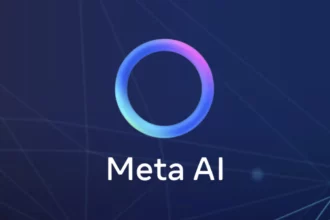Introduction to Large Language Models: LLMs vs. GPT-4
Ah, the age-old debate: Is LLM better than GPT-4? Let’s navigate through this linguistic labyrinth and shed some light on these advanced language models.
So, picture this: you’re in a digital arena where Open-Source Language Models (LLMs) and GPT-4 are battling it out for linguistic supremacy. On one side, you have the mighty GPT-4 by OpenAI, renowned for its exceptional performance across various tasks. On the other side, you’ve got the agile open-source LLMs, rapidly evolving and offering customization like a tailor-made suit. It’s a showdown of epic proportions!
Now, let’s delve deeper into the realm of Large Language Models (LLMs) versus the formidable GPT-4. Here’s where we break down the comparison into bite-sized pieces and explore their strengths, weaknesses, and everything in between.
Evaluating Performance: To paint an accurate picture of these models’ capabilities, we’ve devised a rigorous evaluation framework. By running a series of predetermined questions through both GPT-4 and an open-source LLM like Find model, we’ll unveil insights into their efficiency and accuracy.
Advantages and Disadvantages: Ah, every rose has its thorn! Similarly, open-source LLMs come with their own set of pros and cons. While they offer flexibility and control over your data kingdom, taming them requires more expertise compared to their proprietary counterparts like GPT-4.
Getting Started Guide: Now, if you’re itching to dive into the world of open-source LLMs like a linguistic daredevil, we’ll show you how to get started. From building prototypes using top-notch models to optimizing solutions with lightning-quick alternatives like Mol 7B for answer generation – there are endless possibilities waiting for you!
Let me tantalize your curiosity by hinting at what’s to come in our next sections! We’ll discuss optimizing these LLMs for specific use cases, debunk common misconceptions lurking around incremental AI improvements, and offer insider tips on how to harness the power of open-source LLMs effectively! So why not stick around? There’s more linguistic adventure ahead! 🌟
Table of Contents
ToggleOpen-Source vs Proprietary: A Detailed Comparison
In the realm of language models, the clash between open-source and proprietary options is akin to a linguistic showdown of epic proportions. On one side, you have the robust and renowned GPT-4 by OpenAI, dominating with its exceptional performance across various tasks. Conversely, the agile open-source Language Models (LLMs) like Find model are rapidly evolving, offering customization akin to a tailor-made suit. It’s a battle where flexibility and control meet sheer power and precision.
When evaluating these language giants, understanding their performance is vital. Through a rigorous evaluation framework that pits GPT-4 against open-source LLMs like Find model, we can unveil insights into their efficiency and accuracy. This comparison will shed light on which model reigns supreme in specific linguistic domains or applications.
Advantages and disadvantages play a pivotal role in this dynamic duel. Open-source LLMs provide unparalleled flexibility and control over data but come with a steeper learning curve compared to proprietary models like GPT-4. Each option has its own strengths and weaknesses that make them suitable for different use cases; it’s all about choosing what aligns best with your linguistic goals.
For those eager to venture into the open-source LLM realm, fear not – there’s a guide to get you started on this linguistic odyssey. From bootstrapping prototypes using top-tier models to optimizing solutions with lightning-fast alternatives like Mol 7B for answer generation, the world of open-source LLMs beckons with endless possibilities.
So buckle up for some linguistic thrills because in our upcoming sections, we’ll dive deeper into optimizing these language models for specific use cases. We’ll debunk common misconceptions surrounding incremental AI improvements and share insider tips on harnessing the true potential of open-source LLMs effectively. Stay tuned – more linguistic adventures await! 🚀
Performance Analysis: How LLMs Stack Up Against GPT-4
When it comes to evaluating the performance of language models, the showdown between open-source Large Language Models (LLMs) and the mighty GPT-4 from OpenAI is akin to a linguistic battle royale. The results from our evaluation framework shed light on these linguistic titans’ capabilities, analyzing metrics like API calls, completion time, and accuracy in answering predetermined questions. An intriguing twist emerges as Meta’s open-source Llama 2 proves its mettle by achieving an impressive performance against the renowned GPT-4.
Let’s break down this performance analysis face-off like a linguistic chess match: 1. Objective Evaluation: Our evaluation framework served as the referee in this match, pitting GPT-4 against the Find model. By subjecting both contenders to a rigorous set of questions and scrutinizing their responses, we gained invaluable insights into their efficiency and accuracy.
- Results Reveal: The data unveils a thrilling narrative – while GPT-4 flexed its linguistic muscles by answering 73.3% of questions correctly, Llama 2 showcased its prowess by nailing 54.4% of queries accurately. On the other hand, Claude 2 fell somewhere in-between with a score of 17.1% to 30.6%. These numbers paint a vivid picture of how open-source LLMs stack up against proprietary powerhouses like GPT-4.
As we witness these data-driven duels, it becomes clear that each model brings unique strengths to the table; be it GPT-4’s precision or Llama 2’s surprising performance on key benchmarks. Dive into this linguistic saga with us as we unravel more insights and unveil tricks to optimize these language models for your specific use cases! 🚀
Advantages and Disadvantages of LLMs and GPT-4
When considering the advantages and disadvantages of open-source Large Language Models (LLMs), one major benefit lies in the control you retain over your data, allowing for tailored optimizations to meet your specific needs. On the flip side, working with open-source LLMs can be like herding cats – it demands more expertise and effort compared to their proprietary counterparts. It’s a trade-off between flexibility and complexity, akin to navigating a linguistic labyrinth where every turn presents new challenges and opportunities.
If you’re intrigued by the idea of diving into the world of open-source LLMs, getting started is an adventure waiting to unfold! Begin your journey by crafting a prototype using advanced models like GPT-4 to assess the viability of your solution. Once you’ve dipped your toes into this linguistic pool, optimize your creation using open-source alternatives that offer speed, cost-effectiveness, a competitive edge, or enhanced security. It’s like sculpting a linguistic masterpiece – molding raw potential into refined efficiency.
Now, let’s talk about licensing approaches in this linguistic arena. The contrasting philosophies reflected in the licenses of GPT-4 and Falcon LLM present distinct views on openness and usage restrictions. While GPT-4’s licensing balances commercial interests with responsible AI usage and intellectual property rights, Falcon LLM’s open-source license champions transparency and collaboration for wider community utilization and improvement. Each path has its advantages and considerations; choosing between them hinges on aligning with specific needs and preferences.
As you navigate through the sea of information on large-language models (LLMs) flooding tech news feeds, pondering whether to delve into open source or opt for proprietary behemoths like GPT-4 may seem like juggling oranges – challenging but rewarding once mastered. So, strap on your linguistic armor as we dive deeper into understanding these language giants’ strengths, weaknesses, and how to harness their power effectively in our upcoming conversations! 🚀
Choosing the Right Model: Is LLM Better Than GPT-4?
When it comes to choosing the right language model for your needs, the decision can be as tricky as navigating a linguistic maze. With GPT-4 reigning supreme in the arena of large language models (LLMs) due to its breakthrough capabilities and strong track record, it stands out as an excellent option if you prefer not to host your own model and rely on an API. However, in a world brimming with options like GPT-4, LLaMA 2, Mistral, Falcon LLM, and ChatGPT, how do you pick the perfect match for your linguistic endeavors?
Let’s break down the nuances of selecting an LLM that fits like a glove. When evaluating these models, key considerations come into play: Accuracy, which reflects the model’s ability to produce precise and contextually relevant responses; Fluency, which assesses how smoothly and cohesively the text flows; and Coherence, crucial for maintaining logical consistency in generated content. These factors serve as guiding stars in navigating through the sea of possibilities presented by various LLMs.
Amidst this linguistic showdown, Falcon LLM shines in speed and efficiency with its swift processing capabilities while emphasizing seamless user interaction for enhanced communication flow – pitting rapid execution against smooth user experience. So how do you decide between Falcon LLM and ChatGPT? It boils down to your priorities: do you crave lightning-fast processing or prioritize seamless interaction?
In this quest for the ultimate language model dragon-slayer (or sorcerer), Cohere emerges as an enterprise solution offering a robust platform popular among big league companies aiming to build company-wide search engines customized for private data exploration. Meanwhile, if you’re eyeing GPT-4 variants like GPT-4-0314 or GPT-4-turbo with their unique strengths in abstract problem-solving or multilingual tasks respectively – choices abound like dishes on a linguistically diverse buffet.
Navigating this linguistic rabbit hole may seem daunting at first glance but fear not! Armed with insights from our comparisons between open-source LLMs and proprietary powerhouses like GPT-4 or Falcon LLM’s prowess in rapid processing – you’re equipped to make an informed choice based on your specific needs. Whether opting for flexibility through open source or harnessing raw power from proprietary giants – each path presents intriguing opportunities to craft your linguistic legacy!
- LLMs and GPT-4 are engaged in a battle for linguistic supremacy, each with its own strengths and weaknesses.
- Open-source LLMs offer customization like a tailor-made suit but require more expertise to tame compared to proprietary models like GPT-4.
- Evaluating performance through a rigorous framework can unveil insights into the efficiency and accuracy of both GPT-4 and open-source LLMs.
- If you’re intrigued by open-source LLMs, there are endless possibilities waiting for you, from building prototypes to optimizing solutions for specific use cases.
- Stay tuned for discussions on optimizing LLMs for specific use cases, debunking common misconceptions about AI improvements, and insider tips on effectively harnessing the power of open-source models.





